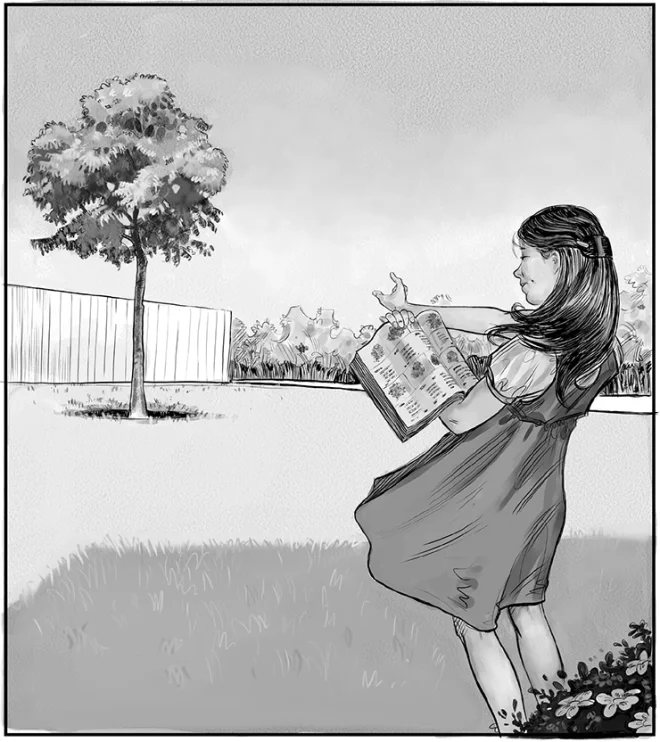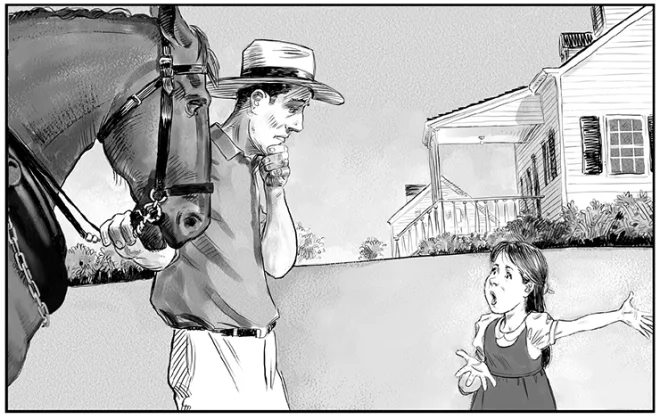When I was young, my family lived on a farm at the edge of a very tiny country town. I didn’t have a lot of other kids nearby to play with. One of the things that provided me entertainment was the huge stash of garden and seed catalogs that came in the mail every Winter. I spent many happy hours poring over these catalogs, planning my vegetable and flower gardens. Being a Missouri farm girl, I’d been bitten early by the gardening bug. Those beautiful catalogs—and one visit to the Missouri Botanical Garden in St. Louis—were enough to foster dreams of magical gardens that would rival anything an English gardener could conjure.
I was a kid with big ideas.
Because I was an only child, quite a few of my garden fantasies came true. I was allowed to dig and plant most anything I wanted and my allowance could pay for. I planned herb gardens and knot gardens. I tried to grow every kind of vegetable I could find. I dreamed up fabulous flower gardens as well as a huge orchard full of every kind of fruit and nut tree. My mother nixed the huge orchard idea, but we did order a hybrid pecan tree from Stark’s Nursery. Since the nursery was in Missouri, we figured its Winter hardiness would be fine for our harsh Zone 5. We found a perfect spot, right in the middle of our adjoining vacant lot, and planted it according to instructions.
Our farmhouse was on what was called a double lot. I looked at that big, empty lot—and then lightning flashed in my 12-year-old mind: I would plant a labyrinth garden!

A voracious reader, I’d read about labyrinth gardens and the mystery surrounding them. In a fever of excitement, I went to our little library to learn more. Mrs. Foster, the librarian, just shook her head full of lavender curls and pointed me to the encyclopedias. There I read that in England, these intricate mazes were traditionally planted with boxwood hedges. I ran home, rummaged through my stack of garden catalogs, and found one that offered 500 boxwood plants for $19.99. I was positively thrilled. I figured that would be enough boxwood to plant my entire labyrinth maze. I ordered the 500 plants—severely denting my savings—and got busy making drawings of my soon-to-be maze. I could just picture those tall, neatly clipped walls of boxwood leading to that pecan tree in the center. I figured if I could get it planted right away, next year I would have a wonderful maze!

The next step was going to be a bit harder. The lot was covered in thick grass that would need to be plowed under. My vegetable garden was already soft black earth from having been used for several years, but the empty lot would be almost impossible to prepare by hand. I was outside contemplating the problem when who should I see but Mr. Bennett, a local farmer, driving his team of horses hooked to a plow! This was exactly what I needed. I ran out to the road yelling, “Mr. Bennett, Mr. Bennett, can you plow me a new garden?”
He said, “Sure can, Missy, where do you want it?” We discussed the vacant lot. He mulled it over and finally said, “It’s gonna cost you $5.00. Think you can afford it?”
I said, “Yes, I’ve got the money!” with great relief: it was all I had left. After much “geeing and hawing,” he had the horses in place and was just getting ready to drop the plow when my mother drove into the driveway. She spotted us and ran over right away, crying, “What in Sam Hill is going on here?”
“I hired Mr. Bennett to plow our vacant lot so I can plant my labyrinth garden,” I said, beaming. “You remember? I told you about it. I just need the ground plowed so I can plant it.” My mother’s reaction was less than delighted. She dismissed the farmer—“Mr. Bennett, I am sorry for your trouble, but we won’t be needing any plowing today”—then turned to me. “You. Get in the house.”
“But Muuuuther!” I cried, as I watched the horses and plow turn towards down the road. “How am I gonna get it plowed?”
“Young lady,” she replied, pointing to the house, “now!”
Mother sat me down at our old kitchen table where all our serious discussions took place. “OK, out with it. What were you thinking?”
I sat there fiddling with my pencils and said, “I told you I wanted a labyrinth garden. I need Mr. Bennett to plow it.” I spread my plans out on the table.
“Of all the hare-brained stunts! You know I’ve spent years pulling weeds out of that lot and getting grass to grow.”
“But I’ve got all these boxwood plants already!” I pleaded, bringing the small box to the table. She picked it up, looked at the collection of little plants for a minute, and started laughing.
“Do you have any idea how long it’s going to take this stuff to grow?” she asked.
“No,” I replied meekly.
“Well, if you planted that maze, it might look pretty good in 40 or 50 years!”
I had to admit that the plants were tiny: they looked like six-inch sticks. The 500 baby boxwoods were returned.
That was a long, long time ago. Today the farmhouse is gone, burned to the ground by a fire in the woodstove. The vacant lot is still there, though. There’s a large, noble pecan tree right in the middle of it.
And, if I’d had my way, that tree’d be surrounded by a beautiful boxwood maze—in its prime! ❖


 Previous
Previous

